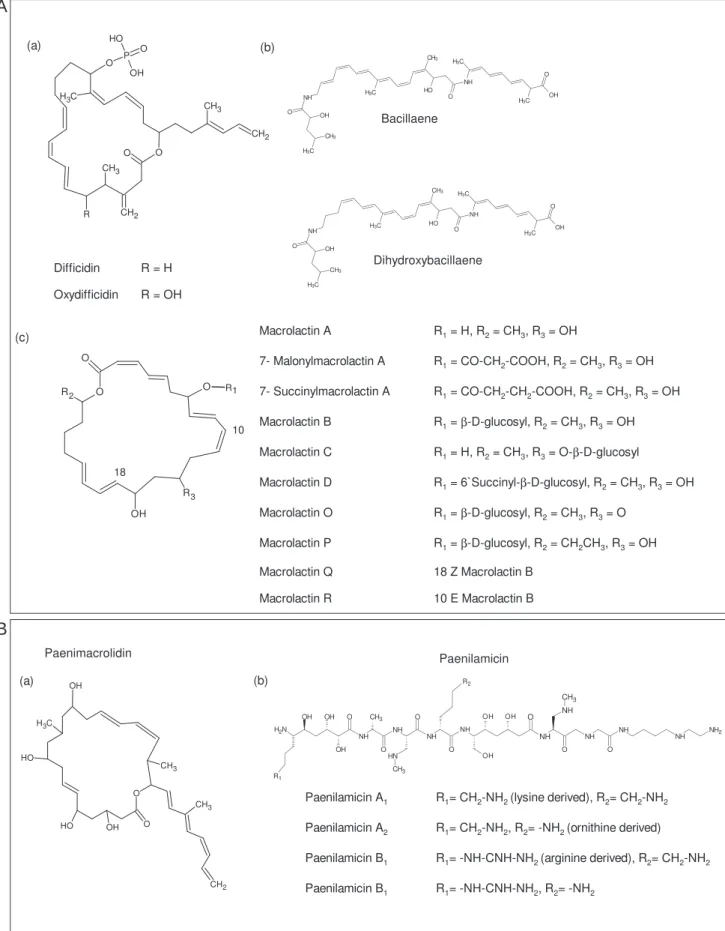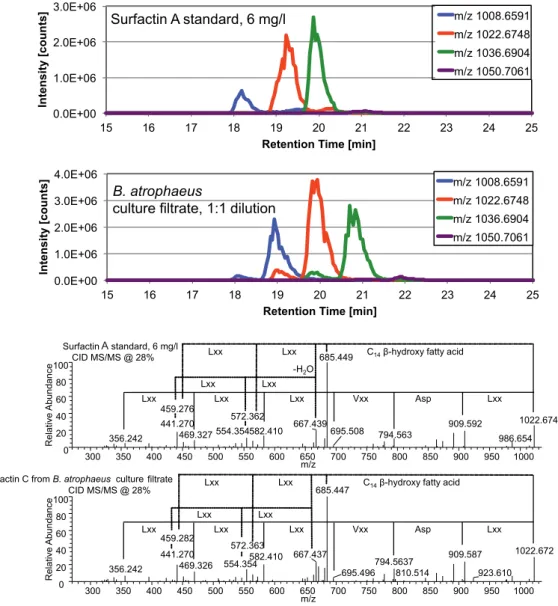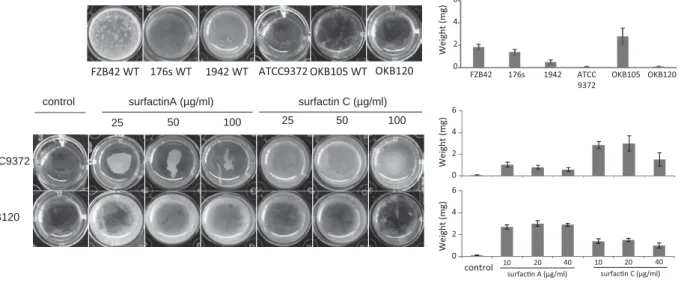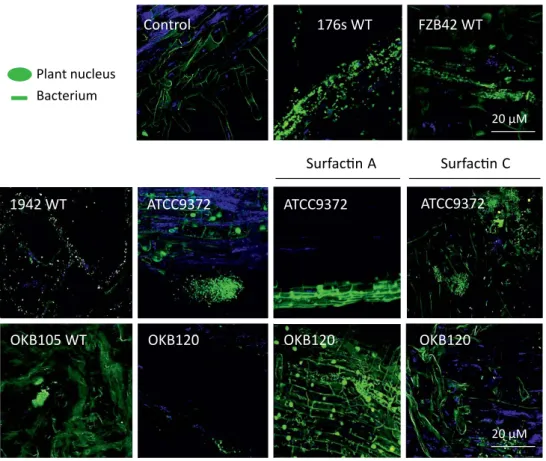You all made it possible to submit most of the work in estimated time. Overview of the most applicable tools and methods specialized for the prediction of NRPS and PKS biosynthetic pathways. Schematic representation of mycosubtilin (iturin family), surfactin, plipastatin (fengycin family) and kurstakin encoding operons in Bacillus species.
Genome mining in the Bacillales suggested that a significant proportion of predicted non-ribosomal peptides and polyketides are not specific to plant-associated Bacillus and Paenibacillus strains.
Bacillus and Paenibacillus as source of bioactive molecules
The plant growth-promoting bacteria (PGPB) Paenibacillus polymyxa (formerly Bacillus polymyxa) stimulate plant growth promotion largely through the production of phytohormones, including indole acetic acid, cytokinins, gibberellins, ethylene, and volatile compounds, and like Bacillus, have the potential to produce many bioactive secondary metabolites. products that have antibacterial and antifungal activities. EPA registered (71065–2) biofungicide, produces iturin and activates induced systemic resistance (ISR) to control plant diseases. Biofertilizer, plant growth-promoting activity, offers protection against various soil diseases, stimulation of ISR.
EPA registered (70051-RNI, 2011) biofungicide against powdery mildew, Sclerotinia, Botrytis, Alternaria, bacterial leaf spot, bacterial spot and spot, fire blight, Xanthomonas, Monilia.
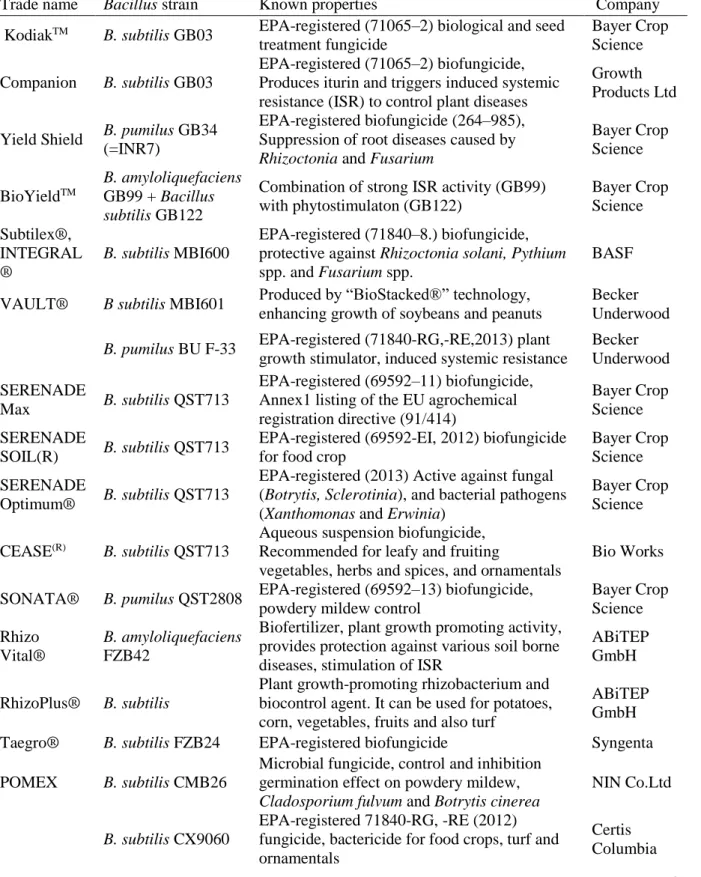
Secondary metabolite biosynthesis
Non-ribosomal peptide biosynthetic pathway
The core catalytic domains
- The adenylation domain and the non-ribosomal code
- Thiolation, condensation and thioesterase domains
A thioesterase (TE) domain is usually present in the back module to facilitate cleavage of the thioester bond between the peptide and the PCP back domain. In many cases, the thioesterase is also responsible for peptide cyclization (Finking and Marahiel, 2004). The A-domain is mainly responsible for the selection of amino acid substrates and the activation of cognate amino acids to amino acyl adenylates at the expense of ATP.
The termination of non-ribosomal peptide synthesis can be achieved by the terminal TE domain of the last module, facilitating the release of the peptide.
Epimerization domain
Sequence based prediction for natural product biosynthetic pathways
Co-linearity rule of assembly lines
Genome sequencing
The last NRPS module in the series is an additional thioesterase (T) or reductase (Re) domain that unwinds the peptide chain. Furthermore, genome sequencing of various natural product-producing organisms has shown that the biosynthetic pathways of the vast majority of natural products, even in well-defined organisms, are still unknown, mainly because they are silent until specific conditions trigger their expression or are detected . conventional screening approaches (Koehn and Carter, 2005). This seems to be one of the main bottlenecks in natural product discovery.
Also the advent of omics technologies such as genomics, transcriptomics, proteomics and metabolomics created a paradigm shift in natural product discovery.
Genome mining tools for natural product discovery
Alternatively, rule-independent algorithms have been developed to overcome these problems as implemented in ClusterFinder (Cimermancic et al., 2014) and EvoMining (Cruz-Morales et al., 2015) (Table 2). Additionally, an integrated MultiGeneBlast (Medema et al., 2013) and ClusterBlast are performed to identify clusters of similar experimentally characterized genes. SEQL-NRPS web application to predict domain specificity A Knudsen et al., 2015 Database focusing on gene clusters.
ClustScan database Database of in silico recombined BGCs Starcevic et al., 2012 Databases focusing on bioactive compounds.
Secondary metabolite biosynthetic potential of bacteria
Web-accessible database on compounds produced by streptomycetes; download connections and metadata in SD.
Secondary metabolites of Bacillus and Paenibacillus
Lipopeptides of Bacillus and Paenibacillus
- Lipopeptides of Bacillus spp
- Paenibacillus lipopeptides
Chemically, members of the surfactin family have a cyclic heptapeptide structure in common, linked to the β-hydroxy fatty acid chain (typically C12 to C16) forming a lactone ring structure (Fig.1) (Peypoux et al., 1999). However, the fengisin production cannot be correlated with the structure of the synthetases described (Koumoutsi et al. 2004). Similar to other NRPS, two thioesterases are present, one in KrsC and KrsD (Béchet et al., 2012).
But unlike cationic lipopeptide structures, fusaricidins exhibit weak activities against gram-negative bacteria (Kajimura et al., 1997).
Polyketide biosynthetic pathway
Polyketides of Bacillus and Paenibacillus
Polyketides of Bacillus
- Bacillaene
- Difficidin
- Macrolactins
The bae gene cluster includes five giant open reading frames (ORFs), including baeJ, baeL, baeM, baeN and baeR (Chen et al., 2006). Bacillaene and dihydrobacillaene represent structural variants of this group (Chen et al., 2009; Butcher et al., 2007) (Fig.6). Difficidin is synthesized on a large gene cluster referred to as dif, which contains 14 open reading frames from difA to difO (Chen et al., 2006).
Similar to difficidin assembly, the activities of missing ER and DH are carried out by domains found in trans (Schneider et al., 2007) (Fig. 6).
Polyketides of Paenibacillus
- Paenimacrolidin
- Paenilamicins
Natural roles of lipopeptides and polyketides from Bacillus and Paenibacillus
- Role in biocontrol of phytopathogens
- Role in motility
- Lipopeptides as elicitors of induced systemic resistance in plants
- Role in chelation of metal ions
- Role in plant tissue colonization
- Bacillus biofilm formation
- Biofilm development
- Heterogeneous cell types within the biofilm
- Signal input to the cell differentiation programmes in biofilm
Some of the root exudates can act as signaling molecules to stimulate a chemotactic response in motile bacteria such as Bacillus and facilitate motility on the root surface (Somers et al., 2004). Surfactins and fengycins treatment also induced early defense-related events and induced changes in the phenolic pattern of tobacco cells (Jourdan et al., 2009). Surfactin biosynthesis is believed to be a prerequisite for biofilm formation and crowding motility as surfactin biosynthetic mutants failed to form robust biofilms (Chen et al. 2007).
TasA then assembles into fibers that are anchored to the cell wall in association with TapA (Romero et al., 2011). Spo0A-ON cells activate a molecular switch (EpsE protein) encoded by the eps operon, which inhibits flagellar motility (Guttenplan et al., 2010) (Fig.9). ComA activates the expression of the paracrine signaling molecule surfactin, which triggers the matrix producers (Lopez et al., 2009c).
These distinct subpopulations are generated from either motile or matrix cells located near the aerial surface (Marlow et al., 2014) (Fig.9). DegU-ON cells are also able to produce BslA protein that contributes to fluid repellency on the biofilm surface to maintain biofilm integrity (Hobley et al., 2013). Sporulating cells are primarily found at the top of the biofilm, which facilitates their spread (Vlamakis et al., 2008).
Spo0A∼P induces the expression of a SinI repressor that in turn binds and represses the SinR repressor, thereby repressing genes involved in matrix biosynthesis (Kearns et al., 2005). Spo0A∼P inhibits AbrB, an alternative repressor regulatory protein that is involved in matrix-associated gene expression ( Lopez et al., 2009d ). It has been reported that plant root exudates such as glycerol, manganese, and L-malic acid can induce KinD activity ( Beauregard et al., 2013 ).
Depending on the phosphorylation status, DegU-P can act as an inhibitor or as an activator (Murray et al., 2009).
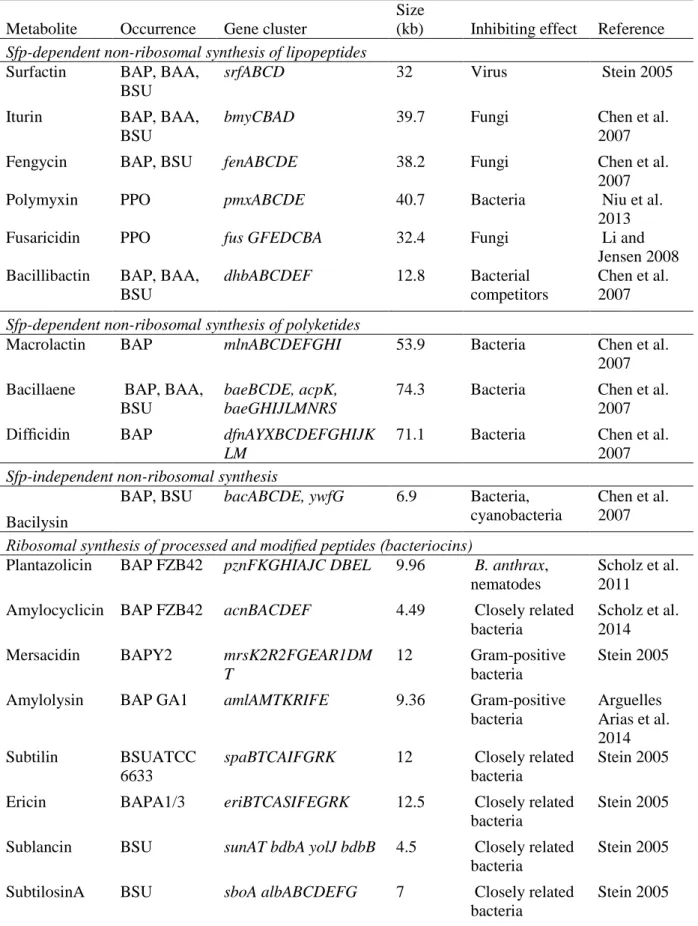
Genome mining: Prediction of lipopeptides and polyketides from Bacillus and
Known and predicted LPs and PKs occurred in the majority of plant-associated genera, mainly in Bacillus and Paenibacillus. Based on a recent whole genome study, it is estimated that 31% of Firmicutes contain NRPS and PKS gene clusters for secondary metabolites. The arrangement and sequence of the catalytic domains within PKS influence PK biosynthesis, leading to a remarkable diversity in PK production.
Metabolites produced by Bacillus amyloliquefaciens and Bacillus subtilis represent a significant part of the diversity of LPs and PKs from the genus Bacillus[31,32]. ACP KS KR MT ACP ACP KS DH KR ACP KS ACP KS KR ACP KS. ACP KS ACP KR MT ACP ACP KS KR ACP KS DH KR ACP KS KR ACP KS difI.
A large number of strains from other genera of the Bacillales seem to lack the potential to produce MPs and PKs type 1 (Supplementary Table). Also for this polyketide we identified variants that differ in number of the catalytic domains KS, DH, cMT and KR. On the contrary, a large fraction of the plant-associated bacteria contained LPS and PKS (Supplementary Table, Supplementary Fig.) with both Bacillus and Paenibacillus dominating the distribution.
BLAST results can often be misleading in predicting metabolic capacity as a portion of the target gene cluster may share similarities within and between different gene clusters. Identification of the polymyxin synthetase gene cluster of Paenibacillus polymyxa and heterologous expression of the gene in Bacillus subtilis.
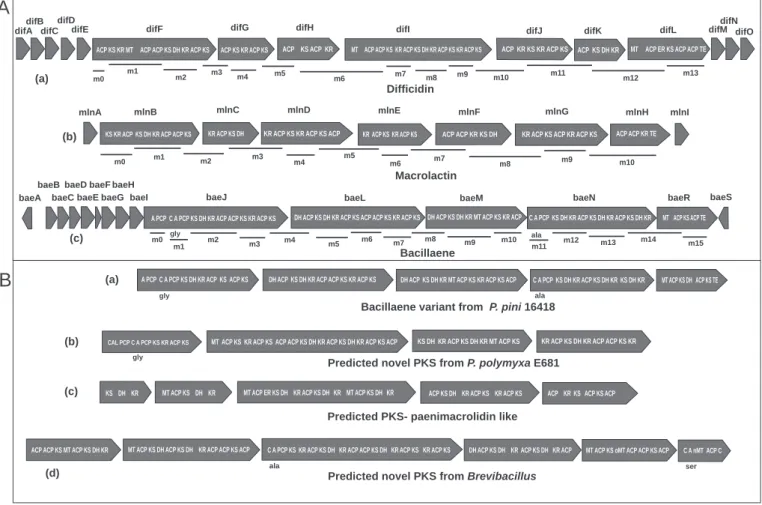
The draft genome sequence of Paenibacillus polymyxa strain CCI-25 encompasses
The draft genome sequence of Paenibacillus polymyxa strain CCI-25 encompasses high potential for secondary metabolite production. We report here the draft genome sequence of Paenibacillus polymyxastrain CCI-25, which exhibits strong antifungal and antibacterial activities in vitro. To evaluate the molecular basis for secondary metabolite production, genomic DNA was isolated by phenol-chloroform extraction, and a library was prepared according to the manufacturer's protocol, using the Nextera XT kit (Illumina, San Diego, CA). ).
The identification of 40 highly conserved single copy marker genes in the assembly by PhyloSift rendering indicated completeness of the genome and excluded contaminant sequences. CCI-25 contains a lantibiotic gene similar to paenicidin A and a predicted polyketide synthase with a different number of acyl carrier domains with 61% identity to bacillaene synthase from B. Given the fact that approximately 370 kb (6.6% of the total genome) of secondary metabolite biosynthesis is dedicated, CCI-25 has high potential to be exploited for medical or agricultural applications.
Nucleotide sequence accession number. The nucleotide sequences have been deposited at DDBJ/EMBL/GenBank under accession no. LTYJ00000000. This work was supported by the life science project LS11-014 of the Niederösterreichische Forschungs-und Bildungsges.m.b.H (NFB). The genome of the plant growth-promoting rhizobacterium Paenibacillus polymyxaM-1 contains nine sites dedicated to non-ribosomal synthesis of lipopeptides and polyketides.
Isolation and characterization of fusaridine-type compound-producing strain of Paenibacillus polymyxaSQR-21 active against Fusarium oxysporumf. Identification of a polymyxin synthetase gene cluster from Paenibacillus polymyx and heterologous expression of the gene in Bacillus subtilis.
Surfactin variants mediate species-specific biofilm formation and root colonization
The analysis of the complete surfactin gene clusters revealed that the disparity is encoded in the adenylation domain of srfC and shows that surfactin variations are distributed in a species-specific manner in bacilli. However, the retention times of the peaks in the extracted ion chromatograms (XICs, 65 ppm) were slightly shifted compared to the corresponding derivatives of different chain length of the authentic surfactin standard (Table 1). The cross peak from H-3 of the fatty acid to Ile-CO clearly locates this amino acid at position 7 of the lipopeptide sequence.
Condensation domains (C), adenylation domains (A), thiolation domains (T) and thioesterase domains (TE) for the surfactin operon genes are shown. Differences between surfactin variants and species can be found in the active site of the adenylation domains A1 and A7 and responsible amino acids in the primary sequence are indicated in a letter code. In our previous study (Aleti et al., 2015), using web-based prediction tools, we confirmed that the majority of surfactin variants encoded in the genome of bacilli and related species differed in peptide unit, particularly at positions 1 and 7 .
In vivo characterization of flotillin scaffold activity on the Bacillus subtilis membrane kinase KinC. A systematic procedure was adapted for the prediction and analysis of the secondary metabolite gene cluster to avoid ambiguity in the discovery of the predicted monomers. The second part of the study investigated the biosynthetic capacity of secondary metabolites and the biocontrol potential of P.
We identified 40 highly conserved single-copy marker genes in the genome assembly that suggested genome completeness and ruled out contaminant sequences. The biocontrol potential of Bacillus atrophaeus strain 176s and its ability to produce cyclic lipopeptides, in particular the underlying molecular mechanism for the synthesis of surfactin variant structures and their signaling role in biofilm formation and root colonization, is addressed in the third phase of the study. Co-production of the three cyclic lipopeptides can synergistically enhance their individual activities and are known to induce systemic resistance in the plant.
The non-ribosomal code encoding the first six amino acids of the surfactin synthetase was identical in both B.

